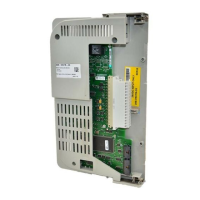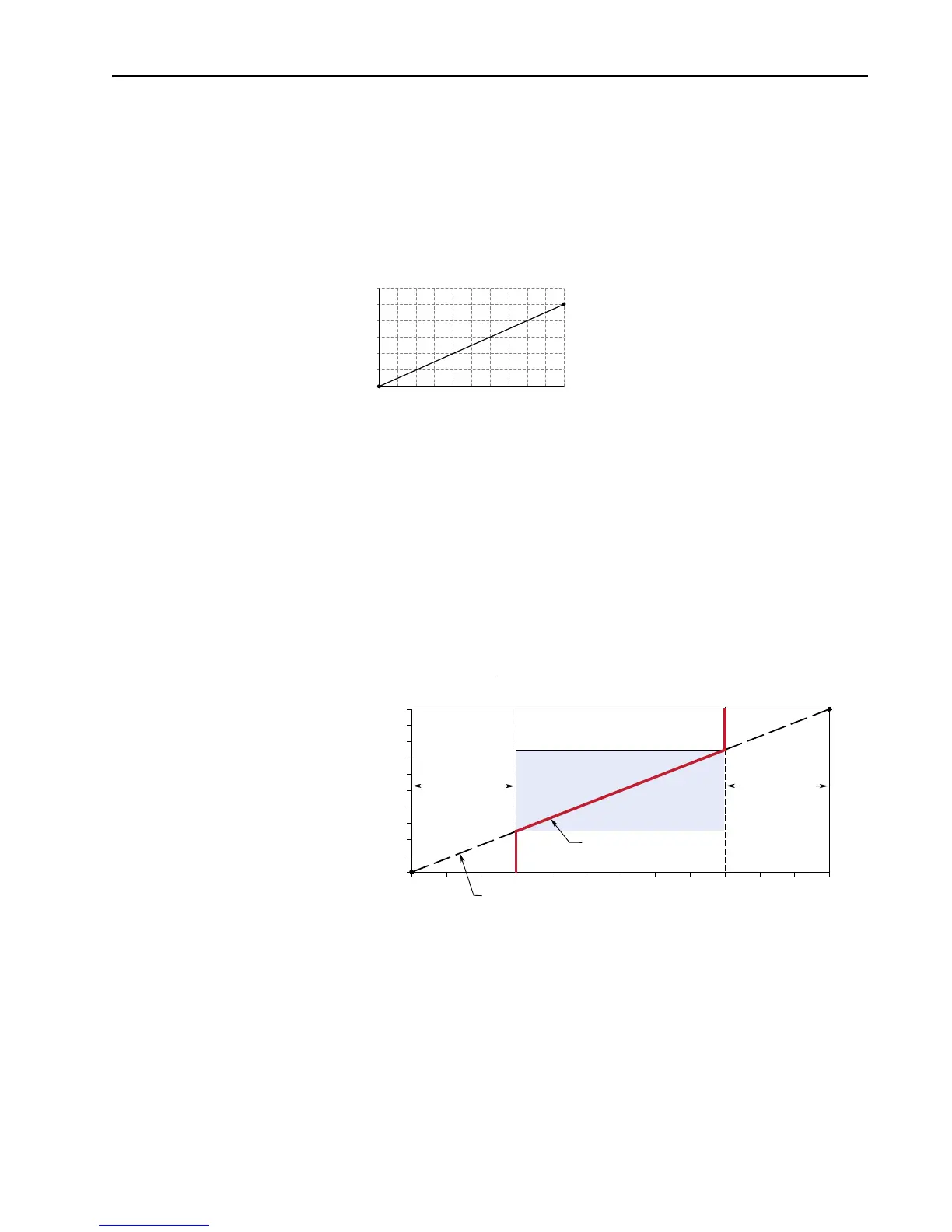Analog Inputs 5
Example 1
− [Anlg In Config], bit 0 = “0” (Voltage)
− [Speed Ref A Sel] = “Analog In 1”
− [Speed Ref A Hi] = 60 Hz
− [Speed Ref A Lo] = 0 Hz
− [Analog In 1 Hi] = 10V
− [Analog In 1 Lo] = 0V
This is the default setting, where 0 volts represents 0 Hz and 10 volts represents 60 Hz providing 1024
steps (10 bit analog input resolution) between 0 and 60 Hz.
Example 2
Consider the following setup:
− [Anlg In Config], bit 0 = “0” (voltage)
− [Speed Ref A Sel] = “Analog In 1”
− [Analog In1 Hi] = 10V
− [Analog In1 Lo] = 0V
− [Speed Ref A Hi] = 60 Hz
− [Speed Ref A Lo] = 0 Hz
− [Maximum Speed] = 45 Hz
− [Minimum Speed] = 15 Hz
This configuration is used when non-default settings are desired for minimum and maximum speeds,
but full range (0-10V) scaling from 0-60 Hz is still desired.
In this example, a deadband from 0-2.5 volts and from 7.5-10 volts is created. Alternatively, the analog
input deadband could be eliminated while maintaining the 15 and 45 Hz limits with the following
changes:
− [Speed Ref A Lo] = 15 Hz
− [Speed Ref A Hi] = 45 kHz
2
4
6
8
10
12
601218
Output Hertz
Input Volts
24 30 36 42 48 54 60
Motor Operating Range
Command Frequency
15 Hz 45 Hz 60 Hz0 Hz
Frequency Deadband
Slope defined by (Analog Volts)/(Command Frequency)
Frequency Deadband
7.5-10 Volts0-2.5 Volts
[Speed Ref A Lo] [Speed Ref A Hi]
10V
0V
[Analog In1 Hi]
[Analog In1 Lo]
[Maximum Speed][Minimum Speed]

